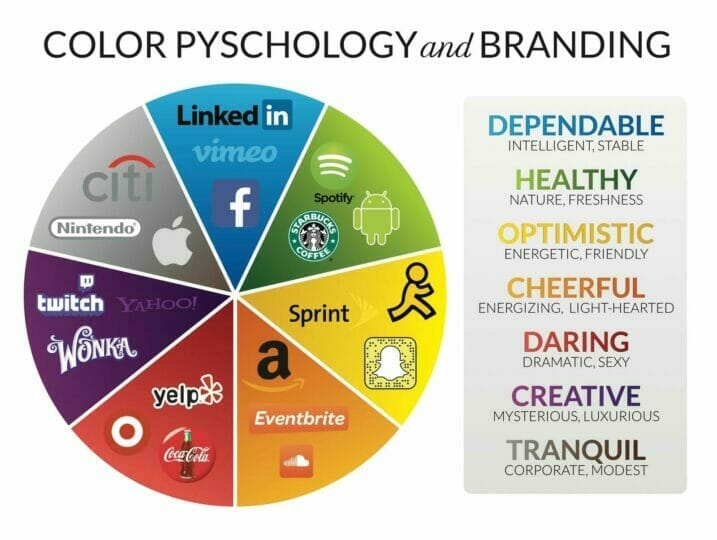Unlocking Cybersecurity: The Power of Ethical Hacking
Ethical hacking, also known as penetration testing or white-hat hacking, is the practice of intentionally and legally exploiting vulnerabilities in computer systems, networks, and applications to identify and fix security weaknesses. The goal of ethical hacking is to help organizations improve their cybersecurity defenses by identifying and addressing potential vulnerabilities before malicious hackers can exploit them.
The concept of ethical hacking has been around for decades, with its roots dating back to the 1960s. In the early days of computing, hackers were often individuals who were curious about how computer systems worked and sought to explore their capabilities. As technology advanced and the internet became more prevalent, the need for cybersecurity professionals who could protect against malicious hackers grew.
The Importance of Ethical Hacking in Cybersecurity
Ethical hacking plays a crucial role in preventing cyber attacks and protecting sensitive information. By proactively identifying vulnerabilities and weaknesses in computer systems, networks, and applications, ethical hackers can help organizations strengthen their cybersecurity defenses and prevent potential breaches.
One of the key benefits of ethical hacking is that it allows organizations to identify and address vulnerabilities before they can be exploited by malicious hackers. By conducting regular penetration testing and vulnerability assessments, organizations can stay one step ahead of cybercriminals and ensure that their systems are secure.
Furthermore, ethical hacking provides businesses and organizations with valuable insights into their cybersecurity posture. By identifying weaknesses and vulnerabilities, organizations can make informed decisions about where to allocate resources for improving their security measures.
Understanding the Ethical Hacking Process
The process of ethical hacking typically involves several steps. The first step is planning and preparation, where the ethical hacker defines the scope of the engagement, identifies the target systems or networks to be tested, and obtains any necessary permissions or authorizations.
Next comes reconnaissance, where the ethical hacker gathers information about the target systems or networks. This may involve scanning for open ports, identifying potential vulnerabilities, and mapping the network architecture.
Once the reconnaissance phase is complete, the ethical hacker moves on to the scanning and enumeration phase. This involves actively probing the target systems or networks for vulnerabilities and weaknesses. The ethical hacker may use various tools and techniques to identify potential entry points and exploit them.
After vulnerabilities have been identified, the ethical hacker moves on to the exploitation phase. This is where the hacker attempts to gain unauthorized access to the target systems or networks using the identified vulnerabilities. The goal is to demonstrate the potential impact of a successful attack and provide recommendations for remediation.
Finally, the ethical hacker provides a detailed report outlining the findings of the engagement, including any vulnerabilities that were identified, their potential impact, and recommendations for remediation. This report is then used by the organization to improve their cybersecurity defenses.
Types of Ethical Hacking Techniques
There are several different types of ethical hacking techniques that can be used to test the security of computer systems, networks, and applications. Some of the most common techniques include:
1. Network penetration testing: This involves testing the security of a network infrastructure to identify vulnerabilities that could be exploited by an attacker. The ethical hacker may attempt to gain unauthorized access to network devices, such as routers and switches, or exploit weaknesses in network protocols.
2. Web application testing: This involves testing the security of web applications, such as websites or online portals. The ethical hacker may attempt to exploit vulnerabilities in the application code or configuration settings to gain unauthorized access or manipulate data.
3. Wireless network testing: This involves testing the security of wireless networks, such as Wi-Fi networks. The ethical hacker may attempt to gain unauthorized access to the network or intercept sensitive information being transmitted over the network.
4. Social engineering testing: This involves testing an organization’s susceptibility to social engineering attacks, where an attacker manipulates individuals into divulging sensitive information or performing actions that could compromise security. The ethical hacker may attempt to trick employees into revealing passwords or granting access to restricted areas.
Tools Used in Ethical Hacking
Ethical hackers use a variety of tools to assist them in their work. These tools help automate the process of identifying vulnerabilities and exploiting them, making the ethical hacking process more efficient and effective.
Some popular ethical hacking tools include:
1. Nmap: This is a network scanning tool that allows ethical hackers to discover open ports, identify potential vulnerabilities, and map network architectures.
2. Metasploit: This is a penetration testing framework that provides a wide range of tools and exploits for testing the security of computer systems and networks.
3. Burp Suite: This is a web application testing tool that allows ethical hackers to identify vulnerabilities in web applications, such as SQL injection or cross-site scripting.
4. Aircrack-ng: This is a wireless network testing tool that allows ethical hackers to test the security of Wi-Fi networks and crack WEP or WPA encryption keys.
It is important for ethical hackers to use the right tools for the job, as using outdated or inappropriate tools can lead to inaccurate results or missed vulnerabilities.
Ethical Hacking vs. Malicious Hacking
While ethical hacking and malicious hacking may involve similar techniques, there are key differences between the two.
Ethical hacking is conducted with the permission and authorization of the target organization, with the goal of improving cybersecurity defenses. The ethical hacker follows a strict code of conduct and operates within legal and ethical boundaries.
On the other hand, malicious hacking is conducted without permission or authorization, with the goal of gaining unauthorized access to computer systems, networks, or applications for personal gain or malicious purposes. Malicious hackers operate outside the law and can cause significant harm to individuals and organizations.
It is important to note that ethical hacking is legal when conducted with proper authorization, while malicious hacking is illegal and punishable by law.
Ethical Hacking as a Career Path
With the increasing prevalence of cyber attacks and the growing demand for cybersecurity professionals, ethical hacking has become a popular career path for individuals interested in technology and cybersecurity.
Ethical hackers, also known as penetration testers or security analysts, are responsible for identifying and addressing vulnerabilities in computer systems, networks, and applications. They work closely with organizations to conduct penetration testing and vulnerability assessments, and provide recommendations for improving security measures.
To become an ethical hacker, individuals need to have a strong understanding of computer systems, networks, and cybersecurity principles. They should also possess technical skills in areas such as network scanning, vulnerability assessment, and exploit development.
There are several certifications available for individuals looking to pursue a career in ethical hacking, such as the Certified Ethical Hacker (CEH) certification offered by the EC-Council. These certifications validate the knowledge and skills of ethical hackers and can help individuals stand out in the job market.
Benefits of Ethical Hacking for Businesses
Ethical hacking offers several benefits for businesses and organizations looking to improve their cybersecurity defenses.
One of the main benefits is improved cybersecurity and risk management. By identifying and addressing vulnerabilities before they can be exploited by malicious hackers, organizations can significantly reduce the risk of a successful cyber attack. This can help protect sensitive information, prevent financial losses, and maintain business continuity.
Ethical hacking also helps organizations comply with industry regulations and standards. Many industries have specific cybersecurity requirements that organizations must meet to ensure the protection of sensitive information. By conducting regular penetration testing and vulnerability assessments, organizations can demonstrate compliance with these regulations and avoid potential penalties or legal issues.
Furthermore, ethical hacking can enhance an organization’s reputation and build customer trust. In today’s digital age, customers are increasingly concerned about the security of their personal information. By investing in ethical hacking and demonstrating a commitment to cybersecurity, organizations can reassure customers that their data is safe and secure.
Ethical Hacking Best Practices for Organizations
To effectively leverage ethical hacking as part of their cybersecurity strategy, organizations should follow best practices and establish clear policies and procedures.
First and foremost, organizations should define the scope and objectives of the ethical hacking engagement. This includes identifying the target systems or networks to be tested, setting clear goals and objectives, and obtaining the necessary permissions or authorizations.
Organizations should also ensure that they have a robust incident response plan in place. This plan should outline the steps to be taken in the event of a successful cyber attack, including how to contain the attack, mitigate the damage, and restore normal operations.
Ongoing training and education are also crucial for organizations looking to prioritize ethical hacking. Cybersecurity threats are constantly evolving, and it is important for organizations to stay up-to-date with the latest trends and techniques. By providing regular training and education to employees, organizations can ensure that they have the knowledge and skills needed to protect against cyber attacks.
Finally, organizations may benefit from working with ethical hacking professionals. These professionals have the expertise and experience needed to conduct thorough penetration testing and vulnerability assessments. By partnering with ethical hacking professionals, organizations can leverage their knowledge and skills to improve their cybersecurity defenses.
The Future of Ethical Hacking in Cybersecurity
As technology continues to advance and cyber threats become more sophisticated, the role of ethical hacking in cybersecurity will become increasingly important.
Emerging trends and technologies, such as artificial intelligence (AI) and the Internet of Things (IoT), present new challenges for cybersecurity professionals. Ethical hackers will need to adapt their techniques and tools to effectively test the security of these technologies and identify potential vulnerabilities.
Furthermore, as more organizations move their operations to the cloud, ethical hackers will need to develop new skills and techniques for testing the security of cloud-based systems and applications.
The potential impact of ethical hacking on the cybersecurity landscape is significant. By proactively identifying and addressing vulnerabilities, ethical hackers can help organizations stay one step ahead of cybercriminals and protect sensitive information.
Ethical hacking plays a crucial role in cybersecurity by helping organizations identify and address vulnerabilities before they can be exploited by malicious hackers. By conducting regular penetration testing and vulnerability assessments, organizations can strengthen their cybersecurity defenses and protect sensitive information.
Ethical hacking involves several steps, including planning and preparation, reconnaissance, scanning and enumeration, exploitation, and reporting. Ethical hackers use a variety of tools to assist them in their work, such as Nmap, Metasploit, Burp Suite, and Aircrack-ng.
Ethical hacking is legal when conducted with proper authorization and follows a strict code of conduct. It is important to distinguish ethical hacking from malicious hacking, which is illegal and punishable by law.
Ethical hacking offers several benefits for businesses, including improved cybersecurity and risk management, compliance with industry regulations and standards, and enhanced reputation and customer trust.
To effectively leverage ethical hacking as part of their cybersecurity strategy, organizations should establish clear policies and procedures, provide ongoing training and education to employees, and consider working with ethical hacking professionals.
The future of ethical hacking in cybersecurity is promising, with emerging trends and technologies presenting new challenges and opportunities for ethical hackers. By staying up-to-date with the latest trends and techniques, ethical hackers can continue to play a crucial role in protecting sensitive information.
If you’re interested in the world of Ethical Hacking, you may also want to check out this insightful article on the impact of online reputation management on customer loyalty. It delves into how businesses can protect their online reputation and build trust with their customers, which is crucial in today’s digital age. To read more about it, click here.


